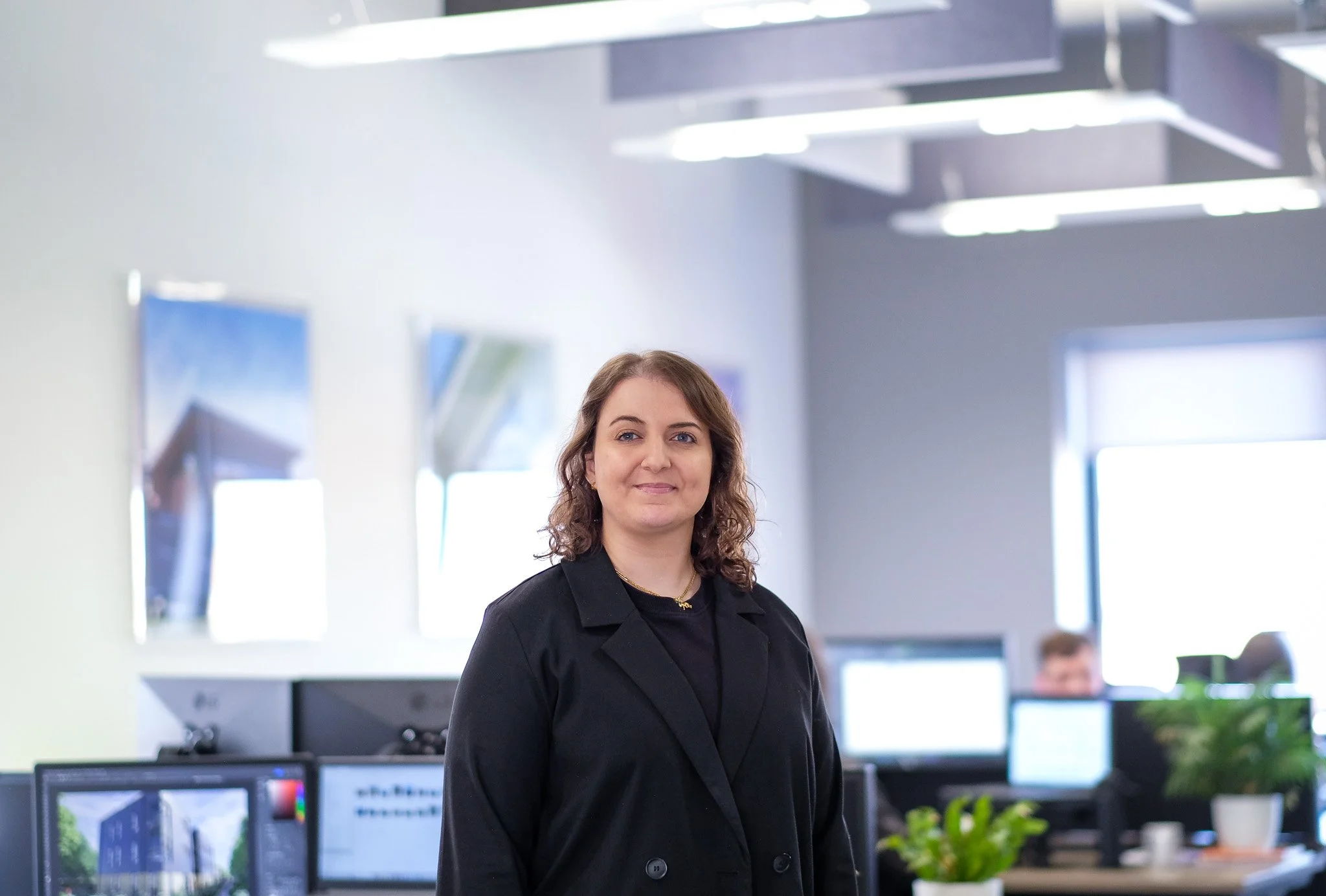Careers in Construction: Inside the Mind of a Project Architect
Meet Project Architect, Yasmin.
This Careers in Construction Month, we asked Yasmin to break down the reality of architecture today. From the simple inspiration that launched her career to the complex push for sustainability, Yasmin gives us a clear look at her professional life.
What initially inspired you to pursue architecture, and what was your path from graduation to becoming a Project Architect?
“I’ve always liked Art, Design Technology and Maths, and I became interested in historic buildings from a young age.
After completing my Part I degree (three years at Newcastle University), I gained two years of essential experience as a Part I Architectural Assistant. This was followed by my Part II Masters (two years, also at Newcastle). The final qualification stage involved a year working part-time as a Part II Architectural Assistant while completing my Part III exams. I officially qualified as an architect in 2020 and stepped into the Project Architect role in 2023.”
Project Architect, Yasmin Kelly.
What exactly does a Project Architect do on a day-to-day basis, and how does your role change through the different phases of a construction project?
“I cover all RIBA (Royal Institute of British Architects) stages, so my role can range from producing initial concept drawings to detailed construction information. I’m involved in meetings with clients, contractors, and consultants, and site visits are the best part of the job!
A typical project might involve initial surveys, feasibility and planning submissions, technical drawings, then site monitoring, snagging, and handover. Early stages are client-facing and conceptual, and the later stages are more technical and coordination-focused as contractors and specialist consultants join in.”
Which part of the entire process do you find most rewarding, and why?
“The most rewarding part is seeing a project completed and knowing the client and users are happy, especially on education or public sector projects!”
What is the most common misconception people have about the job of an architect, especially in the context of construction?
“A common misconception is that you must be able to draw, but you don’t! The role is much broader, involving problem-solving, coordination, and design thinking.”
How critical is the relationship between the architect, the contractor, and other construction trades?
“Very much so! I believe that good communication and collaboration are essential. It’s also important to have regular design team meetings to help keep projects moving efficiently.”
Yasmin and Adam on site with Sam from Gusto Construction.
What is the most significant change or trend that you see impacting the construction and architecture industries right now?
“I would say that sustainability and Net Zero design are having the biggest impact on the construction and architecture industries at the moment. Planning policies and building regulations are improving, but there’s also a genuine willingness across the sector to deliver low-carbon, energy-efficient buildings that are cheaper to run, which is incredible to see!”
How do you think the role of the architect will evolve over the next 5-10 years, particularly in relation to construction technology?
“With increasing focus on sustainable design, architects will need to blend design, technology, and sustainability to create buildings that are future-proof and efficient.”
What is your next major career goal, both in terms of professional development and the types of projects you hope to work on?
“I’d love to focus on public sector and community projects. So, places that make a real difference to people’s lives, while still tackling schemes that are innovative, sustainable and low carbon.”
Are there any specific areas of architecture or construction you are keen to specialise in or learn more about?
“I’m keen to specialise in heritage and conservation buildings. I love the challenge of preserving character while making spaces functional and sustainable for today.”
For young people considering a career in architecture or construction, what is the one piece of advice you would give them to encourage them to take the leap?
“Architecture is a wonderful industry. It lets you travel, meet people, and turn ideas into real spaces. Just go for it!”
As Yasmin demonstrates, the career path demands an eye for creativity with technical reality to deliver a better, more sustainable future.


